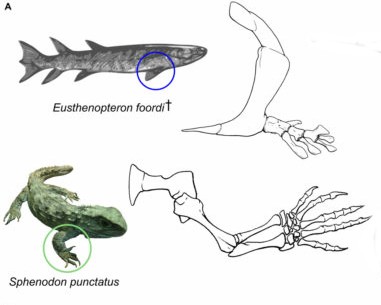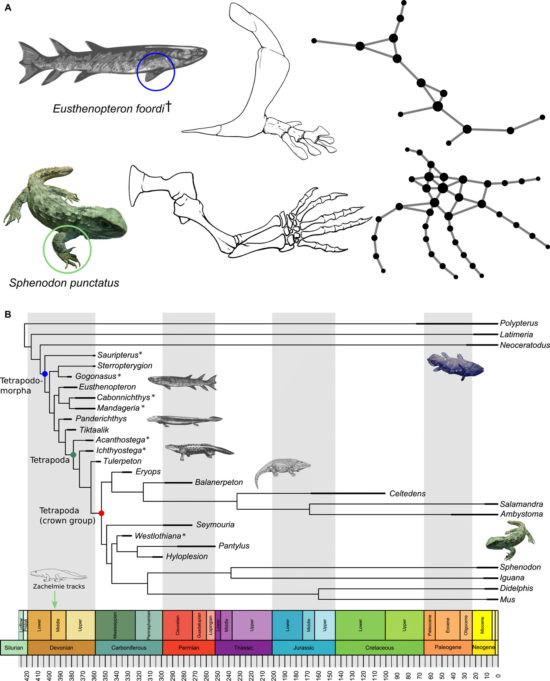May 25, 2019 – The limbs you and I have were once fins. Then approximately 400 million years ago our ancestors transitioned from the water to the land. But they could only successfully do this through an incredible evolutionary adaptation, turning fins that propelled an animal through water, to a limb with feet and toes that could walk on land.
Meet Stephanie E. Pierce, Associate Professor, Harvard Museum of Comparative Zoology. Her specialty is evolutionary biology and she is curator of vertebrate paleontology at the Museum. Pierce has been trying to explain how fin became foot. The fossil record provides plenty of evidence of the transition, and we certainly can understand the correlation, but how did it happen.
The first land-based animals on the planet exhibited a characteristic in their anatomical structure far different than that of a fin. Fin bones are interconnected far differently than limbs. If you look at your body and recite the song “the leg bone’s connected to the knee bone, the knee bone’s connected to the thigh bone” you begin to understand the evolutionary change from fin to limb and foot. The first land animals had linear-connected bones something not seen in fins which have bones that are non-linear in their connections. So the evolution to a limb represented a simplification of anatomy from that of a fin.
In a paper published on May 8, 2019, in the journal Science Advances, Pierce and her co-researchers describe the transformation of lobe-fins found on fish that were capable of living in low-oxygen and shallow, watery environments that often went through dry spells, noting the evolution of limb skeletal structures describing this step as “one of the most important vertebrate morphological and functional transitions.” The research notes common genetic controls for the evolution of both limbs and pelvic bones allowing for the fins-to-feet transition. Both the pelvis and limb evolved in tandem. In the illustration below Pierce traces the progression through the fossil record.
The type of fish that foretold the arrival of land animals on Earth is a distant ancestor of the Coelacanth, a fish that still lives today and is referred to as a living fossil. The representation of the bones of Coelacanth ancestors is almost identical to that found today. You can see in the limb articulation of the fin some of the bone structures that soon became the basis for the first limb and foot as seen in the Sphenodon, an early tetrapod and ancestor of modern amphibians.
How this evolution occurred can be traced through a series of anatomical changes that include elements of the pelvis, wrist, and ankle joints, and the development of digits with the latter increasing the number of bones from that originally found in fish ancestors. Digits obviously gave land animals an ability to articulate their limbs and grasp on to the wet-to-dry surfaces of land. And from the fossil record, it appears that limb, foot, and digits all manifested at about the same time. It appears that function begat form as evolutionary changes that were advantageous to newly-emerged walkers rather than swimmers caught on as successful improvements for the survival of our earliest land ancestors.
But Pierce and her team point out that the parallelism in the evolution of pelvic and pectoral appendages may not have been the most important step in the transition to the land. That may have been the evolution of digits, described as a “morphological novelty that significantly changed the topological features of appendages, discriminating limbs from fins.” So our evolutionary advantage began with having fingers and toes.










